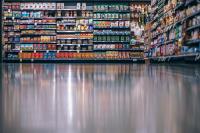 Add My Company
Add My Company
Sign In
What Is Vacuum Forming Used For
04-07-2022

What is vacuum forming used for? We look at applications of vacuum forming by companies and manufacturers. Find out more about how vacuum forming can benefit you.
Applications of Vacuum Forming
In today's civilization, it's difficult to go through a day without coming into contact with at least one vacuum-formed part. This manufacturing process is used to create a variety of items in a variety of industries. For high volume manufacturing, vacuum forming is ideal.
It's lower cost and is widely used by many companies and manufacturers who specialise in large productions. Vacuum forming is excellent for maintaining uniformity. If you use the same tool, you should obtain almost identical results; the only exception is if the plastic is mishandled.
One of the most cost effective thermoforming procedures is vacuum forming. The vacuum forming technology offers substantial flexibility in the development of custom moulded plastics due to its cheap manufacturing costs.
When compared to other plastic forming techniques, vacuum forming has several benefits. This type of thermoforming method has reduced tooling costs, is more cost effective for short production runs, and can make big, lightweight parts with thin walls.
The most important properties for vacuum forming materials are ease of formation with a low forming temperature, thermal strength and good flow, strong impact strength, and minimal shrinkage after cooling. Some materials are classified as "hygroscopic."
In many cases, these materials are considered some of the best when it comes to vacuum forming being provided. These materials are acrylonitrile butadiene styrene, acrylic, co-polyester, polyester, polycarbonate, polypropylene and polyethelene.
Thermoforming is a great choice of plastic moulding method that involves heating a sheet of plastic to a high temperature and then forming it over a mould. Vacuum forming is a thermoforming procedure that uses a vacuum to force/pull heated plastic into the shape of the mould.
After the plastic has assumed the shape of the mould, it is trimmed and ready to be utilised as a product. To get the optimum vacuum forming results with any material, it is essential that the sheet be heated consistently throughout its whole surface area and thickness. To do this, a system of zones that is regulated by energy regulators is required.
Cutting-edge quartz heaters can deliver medium-wave heat; quartz elements are particularly successful in plastic thermoforming, providing higher efficiency with a quick start-up time as compared to ceramic elements.
The machine has a photoelectric beam that scans between the bottom heater and the plastic sheet. If the plastic sheet sags and breaks the beam, a little amount of air is introduced into the bottom chamber, elevating the sheet and preventing it from drooping.
A range of extra finishing techniques can be accommodated by some vacuum forming machines. The two most critical are sheet-level monitoring and pre stretching. Once the plastic sheet is pre stretched to maintain consistent thickness; the temperature is continually applied, and the results should be more uniform over the whole sheet.
Automotive and Transportation
Vacuum forming is used by manufacturers to generate a variety of components and parts for automobiles, buses, boats, and aeroplanes. Vacuum forming is used in the fabrication of anything from bumpers to floor mats and even truck beds in automobiles.
Vacuum forming enables automakers to provide consumers with a variety of colour and detail options while also allowing designers to test new prototypes during the development process.
Industrial
Vacuum forming is also used to make several industrial crates and contoured containers for machines. Vacuum forming is a good manufacturing process for things that are mostly used outside or may come into contact with a heat source since industrial manufacturers may utilise a variety of flame-retardant and UV-resistant materials.
Both fire-retardant UL 94 V-0 polyvinyl chloride (PVC) and UV filtering acrylic (PMMA) may be vacuum manufactured.
Packaging and Displays
If you buy a product that arrives in plastic that is tailored to the product's design, the packaging was most likely created using vacuum forming.
Vacuum-formed packaging is common for razors, toothbrushes, gadgets, cosmetics, and cleaning items. Furthermore, vacuum forming is commonly used in the production of marketing displays, point-of-purchase (POP) displays, and shopping aisle endcap fixtures.
Food Packaging
Vacuum forming is commonly used for food packaging since it is compatible with food-grade plastic and can produce readily sanitised components.
Fruit containers, plastic egg cartons, and cracker trays are all ubiquitous. Making sterile and food graded materials such as plastic food containers and medical equipment using vacuum forming is the best solution. These must be kept sterile and germ-free; hence, vacuum-formed goods are ideal since they can be sterilized and utilised for an extended period of time.
Consumer Goods
The range of consumer items produced by vacuum forming is broad; using vacuum forming, manufacturers may develop things like children's toys, travel equipment, and home decor.
Medical
Vacuum forming is commonly used to make medical parts and components that must be antibacterial or resistant to contamination.
This comprises medical packing, pharmaceutical trays in which tablets are wrapped, hospital bed components, and MRI and CT equipment external elements.
Custom Parts and Special Effects
Vacuum forming is utilised in a variety of sectors to make bespoke and one-of-a-kind products, such as special effects props.
The size, cost, complexity, and capabilities of vacuum forming machines vary widely, allowing independent designers, amateurs, and commercial manufacturers of different skill levels to find the ideal match.
Vacuum forming machines range in price from a few hundred pounds for a small desktop unit to thousands of pounds for industrial devices.
The Best Plastics for Vacuum Forming and Uses
The plastic vacuum forming technique is well-suited to a wide range of applications in a variety of industries, making it an appropriate production process for a wide range of plastic parts. The challenge is determining which sort of plastic is most suited to your specific needs.
ABS
ABS is a robust, impact-resistant plastic. This low-cost plastic is also weather-resistant, making it perfect for machine housings, baggage, and car parts.
HIPS
HIPS - high impact polystyrene - is a robust, stiff plastic with great impact strength. It's simple to cut, trim, and machine, and it comes in a number of colours.
As a result, this low-cost plastic is beneficial in the production of toys, signage, and point-of-sale displays. This low-cost plastic is a popular choice for vacuum shaping. It has a high melting point and a low amount of rubber in its composition, making it pliable and simple to work with.
HIPS is strong enough to be used and interlocked in manufacturing projects or developments of models of cars and airplanes due to its strengthening textures. Creating aircraft content with HIPS is highly feasible and can always get the job done without compromising strength, efficiency or durability.
HDPE
Due to its great impact resistance, while being flexible, high-density polyethylene (HDPE) is mostly utilised for caravan and automobile parts. It is simple to construct and weld, and it is one of the less expensive polymers used in vacuum forming.
PVC
PVC, or polyvinyl chloride, is a low-cost material with medium to high strength. This plastic is simple to construct, weld, and machine, and it has high fire retardant and chemical qualities, making it suitable for a wide range of applications such as packaging, electronics, and automotive.
Polypropylene
Polypropylene is a flexible, low-cost plastic with great impact strength. It is chemical resistant and aesthetically pleasing, making it suitable for chemical tanks, food containers, medical uses, and automobiles.
Semi-crystalline materials are exceedingly flexible and absorb little moisture, making them appropriate for a wide range of applications. It is, nevertheless, susceptible to sheet sagging and has challenging forming qualities.
Acrylic
Acrylic plastic is simple to make and adheres well to adhesives and solvents. While this plastic is more expensive, its great quality, adaptability, and robustness make it suitable for signage, eagle baths, and displays.
Though it is a strong material that takes cellulose and enamel sprays; it can also be prone to shattering. Acrylic is a transparent, flexible material that may be thermoformed into a variety of plastic shapes.
It softens at high temperatures but doesn't turn liquid until near 320 degrees, making it ideal for heat shaping. It is available in a wide range of colours, clarities, and finishes.
This type of plastic is a less expensive alternative to polycarbonate and is both lighter and less expensive than glass. It has high overall strength, making it shatter-resistant, as well as good UV tolerance and polishability, and is commonly used in point of sale and retail contexts, LCD panels, greenhouses, and so on. Acrylics with well-known brand names include Perspex and Plexiglas.
Perspex cast sheet requires more shaping pressures than extruded acrylic and, as a result, is less appropriate for low-pressure vacuum forming unless the forms are relatively big and basic in design. Extruded material, on the other hand, is perfect for vacuum shaping.
Due to its lower melt strength, it can be pulled with relatively low vacuum forces, and it has great extensibility and hence good definition within the mould.
Polycarbonate
Polycarbonate is a tough, long-lasting polymer with good impact resistance. While it is one of the most costly polymers, it is self-extinguishing, making it ideal for visors, riot shields, and machine guards in the aerospace sector.
Polycarbonate is easy to manufacture, accepts spray, and may be ultrasonically welded, tapped, and drilled. Polycarbonate is a thermoplastic that is robust and rigid and has a high impact resistance. Although it is one of the more costly materials, it has a wide range of applications since it is perfect for machining and has high formability and strength.
ASA
This material is extremely tough and has a high impact strength. In addition to its endurance, ASA is UV stable, making it suitable for outdoor applications. It is most typically used in the automotive sector for automobile mirrors and grilles, but it may also be utilised for garden furniture and signage.
PETG
PETG plastic is an FDA-approved material with high impact strength, sterility, and resistance to acids, oils, and alcohols. It is ideal for food packaging and medical applications because it can be precisely moulded and cut without affecting structural integrity.
For more information on What Is Vacuum Forming Used For talk to Plastics By Design Ltd
Enquire Now
List your company on FindTheNeedle.

